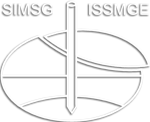Correlations between SPT and DPSH results based in energy measurements
Correlations between SPT and DPSH results based in energy measurements
Dynamic probing tests, namely in the case of the super-heavy version, are commonly used in geotechnical investigations, particularly in heterogeneous soils, stiff soils, compacted to very compacted soils and in decomposed rock. The more usual approaches to obtain the subsequent geotechnical parameters consists in transforming the N20 DPSH results in equivalent NSPT and use the correlations established with this latter. However, the usual correlations used in our days are based in the concept of corrected SPT values, namely N60 and (N1)60, which creates an important limitation to its use in DPSH results. A research work consisting in pairs of SPT and DPSH tests executed side by side with the same equipment (hammer, anvil, rods, etc.), both instrumented with energy measurements obtained from the SPT Analyzer (PDI), was performed in the Institute Polytechnic of Guarda (IPG, Portugal) experimental site. The obtained results revealed differences between the Energy Transfer Ratios (ETR) of DPSH and SPT tests, which seems to be related with the different penetration devices (SPT sampler and DPSH cone). Departing from that it was possible to compare both the test results (NSPT and N20) and the respective corrected values, N60 or (N1)60. Presentation and discussion of results will be presented in the paper herein.
N. Cruz; J. Cruz; Carlos Rodrigues; L. Fagundes; C. Chaquisse
18th European Conference on Soil Mechanics and Geotechnical Engineering (ECSMGE2024)
A - New developments on structural design
